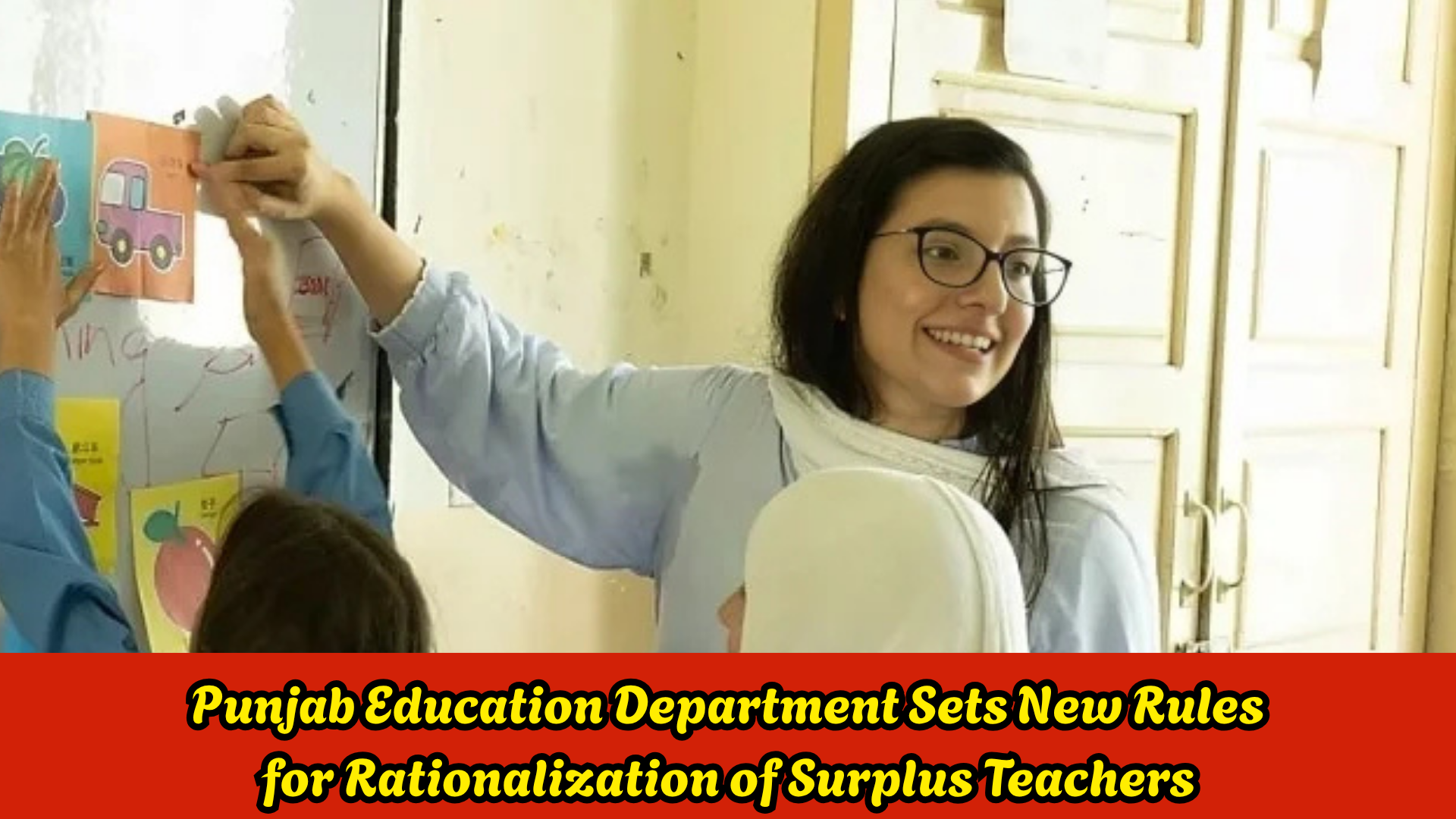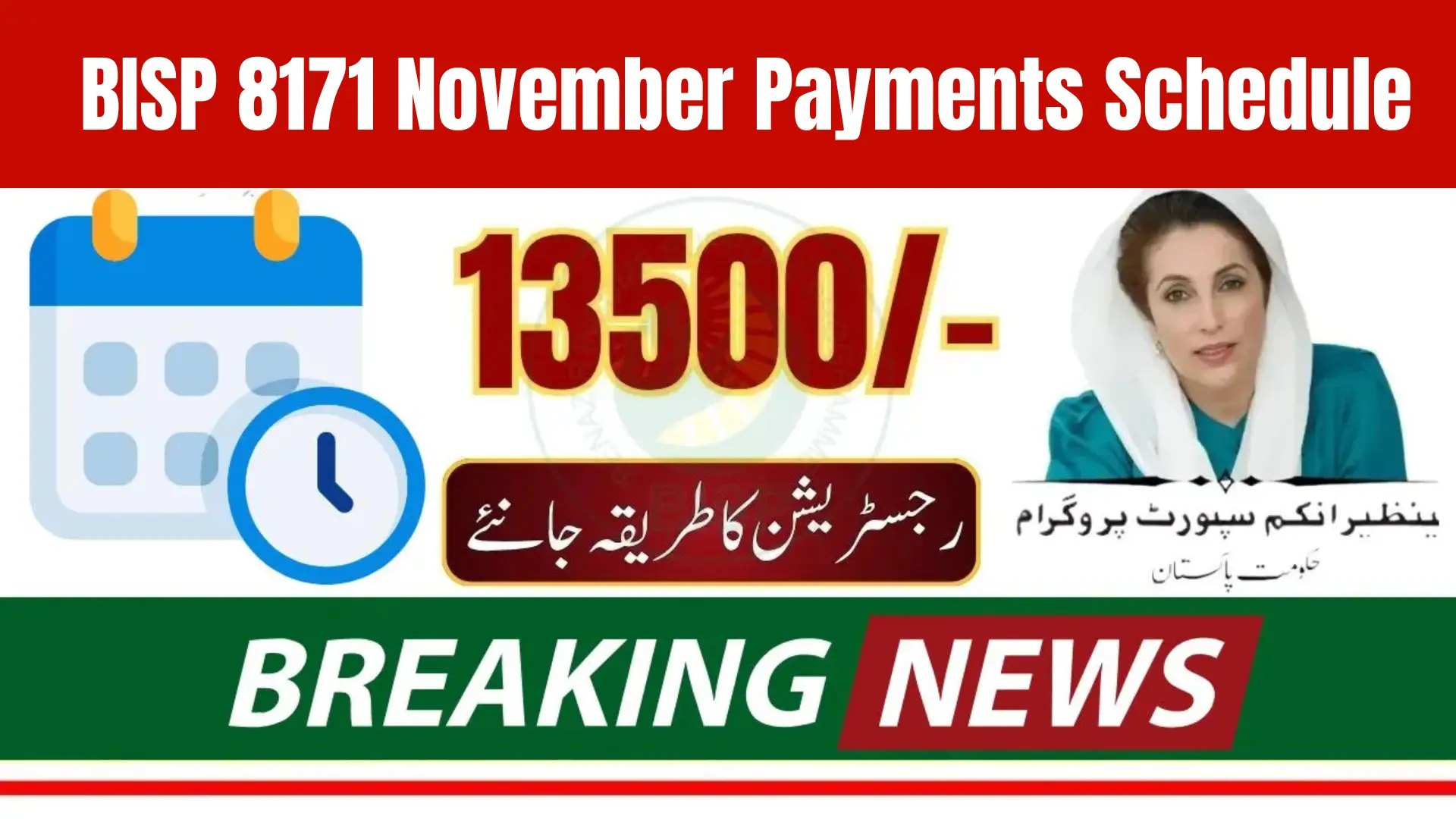Punjab Education Department Sets New Rules for Rationalization of Surplus Teachers. The Punjab Education Department has announced new rules for the rationalization of surplus teachers in government schools. The main goal of this move is to balance teacher distribution, transferring staff from schools with extra teachers to those with shortages. The new policy ensures fairness by introducing clear distance and gender-based criteria, making the process more transparent and structured.
Rationalization of Surplus Teachers: An Overview
The rationalization of surplus teachers means relocating teachers from overstaffed schools to institutions facing shortages. This initiative ensures every school has the required number of qualified teachers for each subject and class, thereby improving the overall quality of education across Punjab.
Why Rationalization Is Needed
Many government schools in Punjab face unequal teacher distribution. Some have more teachers than needed, while others operate with very few staff. This imbalance affects students’ learning outcomes and increases the workload on teachers in under-resourced areas.
The new rationalization policy aims to:
- Ensure equal teacher-student ratios across schools.
- Optimize educational resources.
- Reduce administrative gaps in rural and urban schools.
New Transfer Rules Based on Gender and Distance
The Punjab Education Department has introduced specific transfer rules to ensure a fair and transparent relocation process for surplus teachers. The criteria are based on gender and distance from the current posting.
| Category | Maximum Transfer Distance | Distance Calculation Method |
|---|---|---|
| Female Teachers | 15 kilometers | Measured directly via Google Maps |
| Male Teachers | 25 kilometers | Measured directly via Google Maps |
These guidelines were created to consider both travel feasibility and personal convenience, especially for female teachers who may have family or travel constraints.
Key Points:
- Transfers will only occur within the defined distance limits.
- The Google Maps tool will be used for accurate measurement.
- The process prioritizes fairness, accuracy, and transparency.
Posting Criteria for Surplus Teachers
The department has outlined clear posting priorities to ensure that teacher shortages are quickly addressed without disrupting the academic calendar.
Main Objectives of Posting Criteria
- Fill Vacant Positions: Surplus teachers will be sent to schools lacking staff in the same or nearby localities.
- Maintain Subject Balance: Schools must have the minimum required number of teachers per subject.
- Ensure Equal Distribution: Teacher-student ratios should remain balanced across all institutions.
- Reduce Workload Pressure: Teachers in understaffed schools will receive relief once new postings are completed.
This step will help improve:
- Syllabus completion rate.
- Teaching quality in both rural and urban areas.
- Student performance through consistent academic attention.
Implementation Timeline and Notifications
According to the latest instructions, all District Education Authorities (DEAs) have been informed about the new rationalization policy.
Key Implementation Details
| Activity | Description | Expected Date |
|---|---|---|
| Official Notification | Issued to all District Education Authorities (DEAs) | October 20, 2025 |
| List Preparation | Identification of surplus and deficient schools | By October 21, 2025 |
| Matching Process | Allocation of surplus teachers to schools with vacancies | After October 21, 2025 |
| Final Transfer Orders | Issued by DEAs | Within the next few weeks |
Every district will prepare and verify lists of schools with surplus staff and teacher shortages. After verification, teachers will be matched and transferred according to the gender and distance criteria.
Expected Impact on Schools and Teachers
The rationalization policy is expected to enhance educational balance across Punjab’s public schools. Here’s how it will make a difference:
Positive Outcomes
| Area | Expected Benefit |
|---|---|
| Teacher Allocation | Fair and balanced distribution of teachers across all schools |
| Education Quality | Improved classroom management and syllabus coverage |
| Workload Distribution | Reduced burden on teachers in short-staffed schools |
| Access to Education | Better learning outcomes for students in underserved areas |
| Transparency & Fairness | Clear, measurable distance criteria reduce favoritism |
The new system uses Google Maps-based distance checks, eliminating bias and ensuring teachers are relocated within reasonable travel distances.
Challenges and Adjustments
While the policy promotes fairness, some teachers may face challenges adapting to their new schools. Possible issues include:
- Adjustment to new environments and school management styles.
- Commuting difficulties, especially in rural regions.
- Emotional stress due to change in colleagues or school culture.
However, the Education Department has designed these rules to minimize inconvenience, particularly for female teachers, by limiting the transfer radius and offering flexibility in certain exceptional cases.
Statements from the Education Department
Officials from the Punjab School Education Department confirmed that the new rationalization framework is intended to improve equity and accountability in public education.
“Our goal is to ensure that every child in Punjab has access to qualified teachers, regardless of location. The rationalization process is designed with fairness, transparency, and efficiency in mind,” said an Education Department spokesperson.
They also added that DEAs must ensure proper record-keeping and timely execution to avoid unnecessary delays or disputes.
How Teachers Can Prepare
If you are a government school teacher in Punjab, here are a few tips to prepare for the rationalization process:
- Check official notifications on the Punjab School Education Department website.
- Verify your service record and school posting details to avoid errors.
- Stay in contact with your District Education Officer (DEO) for updates.
- Keep digital copies of your service documents ready in case verification is needed.
Conclusion
The Punjab Education Department’s new rationalization policy is a significant step toward achieving educational equality and efficient staffing in public schools. By introducing clear, gender-based distance limits and transparent transfer rules, the department ensures that every student has access to quality education.
Although some teachers may find the transition challenging, the new rules prioritize fairness, balance, and accountability — creating a more equitable education system across Punjab.
FAQs
1. What is meant by “rationalization of surplus teachers”?
It means transferring teachers from schools with excess staff to those facing shortages, ensuring balanced teacher distribution.
2. How far can female teachers be transferred under the new policy?
Female teachers can be transferred within a 15-kilometer radius of their current school.
3. What is the transfer limit for male teachers?
Male teachers can be transferred within 25 kilometers of their current posting.
4. When will the new rationalization process begin?
The process will start after October 21, 2025, as directed by the Punjab Education Department.
5. Who prepares the list of surplus teachers?
Each District Education Authority (DEA) is responsible for identifying surplus and deficient schools and conducting transfers accordingly.















